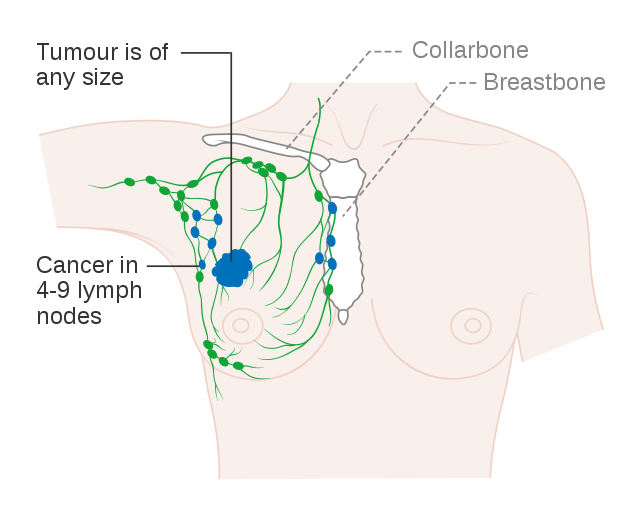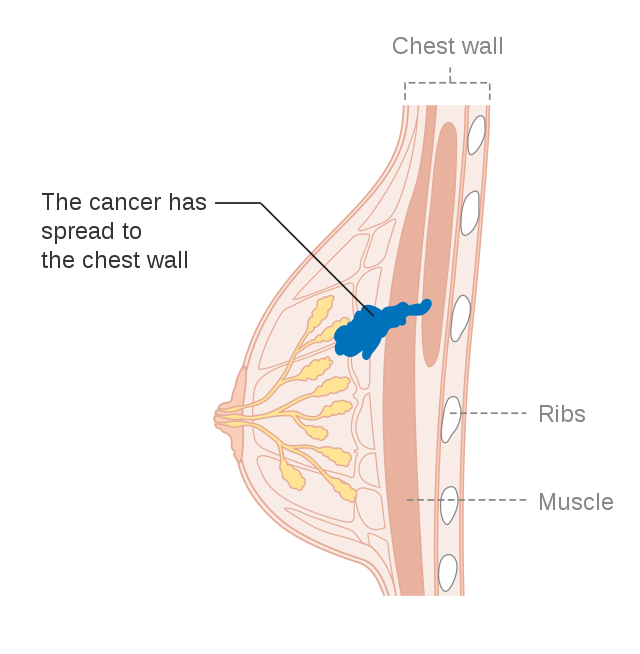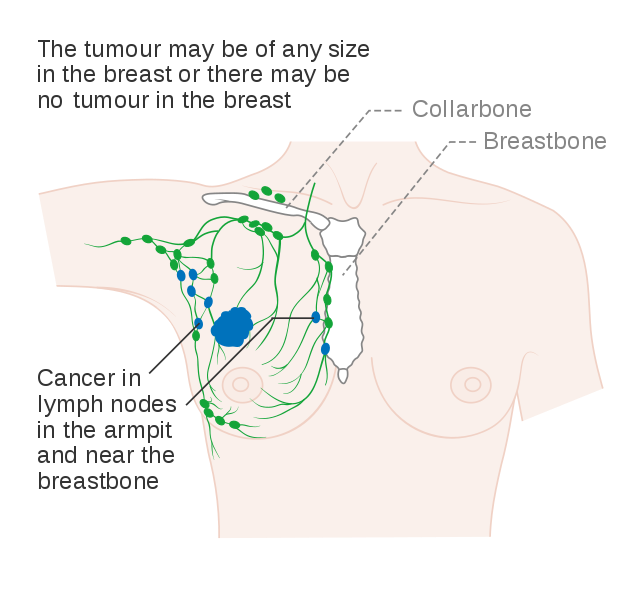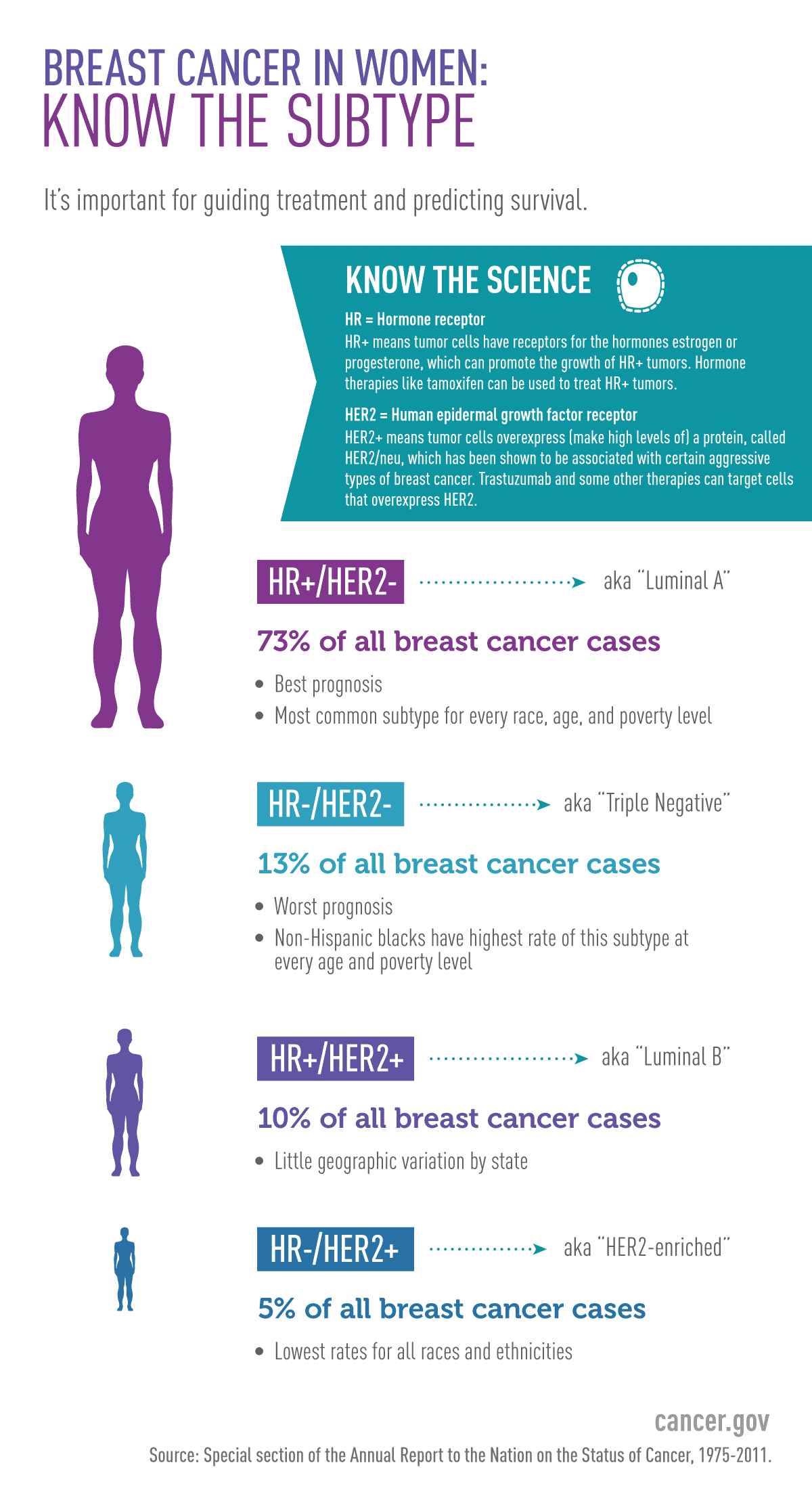Overview
Stage 3 Breast Cancer is when the cancer has spread to the lymph nodes close to the breast, to the skin of the breast or into the chest wall.
Tap “Watch Now” below for an easy-to-understand overview of Stage 3 Breast Cancer and then compare your treatment options side-by-side to help your doctors find the best option for you.
- Stage 3A Breast Cancer
- Stage 3B Breast Cancer
- Stage 3C Breast Cancer
- Understanding HR+, HER2, TNBC
Overview
Stage 3A Breast Cancer means that,
1. The tumor is up to 5 centimeters with affected lymph nodes under the arm (axilla), that are fixed to one another or to the deeper tissues, or the lymph nodes near the breast bone are affected, but not the ones under the arm
or
2. The tumor is larger than 5 centimeters with affected lymph nodes under the arm (axilla), fixed or not, or near the breast bone, but not both at the same time.
What Tests Will I Need and Why?
Blood and Imaging tests are done to understand your general health, confirm your diagnosis and determine your cancer stage.
Tissue analysis is also typically done to identify your cancer sub-type, which is critical to finding the best treatment option for you. The most common Breast Cancer sub-types are Hormone Receptor Positive, HER2 Positive and Triple Negative (TNBC).
You may also require special Saliva or Blood Analysis to look for specific mutations (actual changes in your body’s DNA), called BRCA1 and BRCA2.
Read this summary as often as needed and then tap, “Compare My Treatment Options Now“. Our comparison page has been created to help you understand the latest FDA-approved treatment options including, where and how the treatment will be given, what side-effects you may have and most importantly, who can help you pay for your treatment.

Cancer Research U.K. CC BY-SA 4
Overview
When diagnosed with Breast Cancer Stage 3B,
The cancer has spread to the skin of the breast or your chest wall or the parts of your body that protect your lungs ( ribs, muscles, skin or connective tissues). For some people, the cancer has caused the skin to break, something referred to as an ulcer. For others, the cancer causes swelling in the breast, making it look like “orange skin”.
Additionally, there may be affected lymph nodes under your arm, fixed or not, or near the breast bone, but not both at the same time.
What Tests Will I Need and Why?
Blood and Imaging tests are done to understand your general health, confirm your diagnosis and determine your cancer stage.
Tissue analysis is also typically done to identify your cancer sub-type, which is critical to finding the best treatment option for you. The most common Breast Cancer sub-types are Hormone Receptor Positive, HER2 Positive and Triple Negative (TNBC).
You may also require special Saliva or Blood Analysis to look for specific mutations (actual changes in your body’s DNA), called BRCA1 and BRCA2.
Read this summary as often as needed and then tap, “Compare My Treatment Options Now“. Our comparison page has been created to help you understand the latest FDA-approved treatment options including, where and how the treatment will be given, what side-effects you may have and most importantly, who can help you pay for your treatment.

Cancer Research U.K. CC BY-SA 4
Overview
Stage 3C Breast Cancer means that the tumor in your breast is any size and:
1. The lymph nodes above your collar bone are affected,.
or
2. The lymph nodes below your collar bone are affected,
or
3. Both the lymph nodes under your arm (Axilla) and the ones near your collar bone are affected
What Tests Will I Need and Why?
Blood and Imaging tests are done to understand your general health, confirm your diagnosis and determine your cancer stage.
Tissue analysis is also typically done to identify your cancer sub-type, which is critical to finding the best treatment option for you. The most common Breast Cancer sub-types are Hormone Receptor Positive, HER2 Positive and Triple Negative (TNBC).
You may also require special Saliva or Blood Analysis to look for specific mutations (actual changes in your body’s DNA), called BRCA1 and BRCA2.
Read this summary as often as needed and then tap, “Compare My Treatment Options Now“. Our comparison page has been created to help you understand the latest FDA-approved treatment options including, where and how the treatment will be given, what side-effects you may have and most importantly, who can help you pay for your treatment.

Cancer Research U.K. CC BY-SA 4
Your Status is critical to identifying the best treatment option for you
In addition to the size and cancer stage, your treatment options are guided by your Hormone Receptor status (+ or -) and HER2 status. Status is identified by analyzing cancer cells taken from the tumor in your breast, a procedure called a Biopsy.
HR positive (HR+)
An HR+ diagnosis means that your hormones are fueling the tumor. To understand your specific sub-type, your doctors will look for Estrogen Receptors (ER) and Progesterone Receptors (PR), your tumor can have one, both or neither.
About 70% of breast cancers are HR+.
If you test positive for HR, it means that your treatment should include medications that block hormone production.
HER2 positive (HER2+)
HER2 is a protein that is found in normal cells, it gives cells a signal to grow and produce more cells. A HER2 positive (+++) breast cancer diagnosis means that the tumor cells have too many HER2 proteins, causing uncontrolled tumor cell division, tumor growth and spreading.
About 15% of all breast cancer tumors are HER2 positive (+++). Some patients with HR+ can also have HER2 positive (+++).
If you test HER2+, it means that your treatment should include medications that block the HER2 protein to stop tumor cell growth.
Triple Negative (TNBC) (aka HER2-/HR-)
A TNBC diagnosis means that analysis of your cancer cells has shown that negative results for 3 key breast cancer “fuels”:
- Estrogen Receptors (ER)
- Progesterone Receptors (PR)
- Too much HER2 Protein
TNBC is a type of fast-growing breast cancer that occurs in about 13% of all breast cancers.
If you are diagnosed with TNBC+, it means that your treatment should include chemotherapy in most cases, and for some women Immunotherapy.

Recommended Breast Cancer Videos

Stage 3 Breast Cancer
A Helpful Introduction from Dr. Jennifer Griggs

How Cancer Spreads
Metastatic = Advanced

Diagnosing Your Cancer
How Does a CT Scan Work?

Diagnosing Your Cancer
How Does a PET Scan Work?

Exercise! You Can Do It
Reducing Side Effects & More
Answers to Most Searched Questions
What is Stage 3 breast cancer?
Stage 3 means that cancer has spread from the breast to lymph nodes close to the breast or to the skin of the breast or to the chest wall. It is also called locally advanced breast cancer.
Stage 3 breast cancer means that the tumor can be 5cm or larger, with 4 or more affected lymph nodes, skin and muscle can also be affected.
Source: Cancer.org
Stage 3 breast cancer survival rate
According to SEER Data, Stage 3 Breast Cancer has a survival rate of 86.1%. This generally means that people with Stage 3 Breast Cancer are 86.1% as likely as people without cancer to live for 5 years after the diagnosis.
Source: Cancer.gov
Stage 3 breast cancer symptoms
These are some of the symptoms of Stage 2 Breast Cancer:
- Skin irritation or dimpling
- Lump in the breast
- Swelling of all or part of the breast
- A change in the size or the shape of the breast
- Nipple turning inward or change in the appearance of a nipple
- Nipple pain
- Nipple discharge that is not breast milk
Source: Cancer.org
Stage 3 breast cancer prognosis
According to SEER data, Stage 3 Breast Cancer has a recurrence rate of 9-30% in 5 years. For example, if the 5-year relative survival rate for a specific stage of breast cancer is 9-30%, it means that women who have that cancer are, on average, about 9-30% as likely as women who don’t have that cancer to live for at least 5 years after being diagnosed.
Source: Cancer.org
What is Stage 3 inflammatory breast cancer?
Inflammatory breast cancer (IBC) is rare and accounts for only 1% to 5% of all breast cancers. Although it is a type of invasive ductal carcinoma, its symptoms, outlook, and treatment are different. IBC causes symptoms of breast inflammation like swelling and redness, which is caused by cancer cells blocking lymph vessels in the skin causing the breast to look “inflamed.”
Source: Cancer.org














